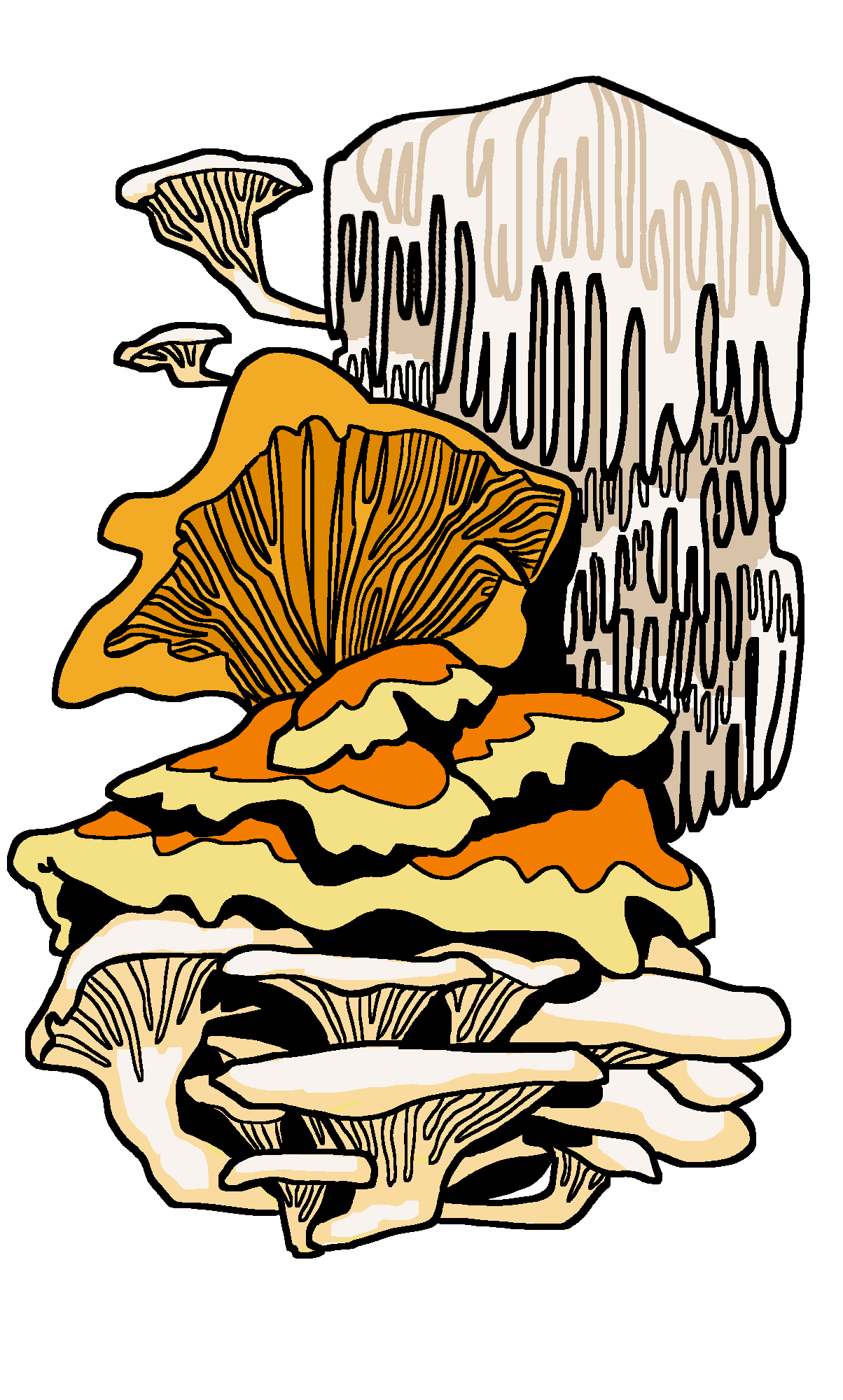
On Sept. 17, Lewis & Clark’s Mycology Club got off to an exciting start by hosting its highly anticipated debut meeting. Mycology, the study of fungi, has been gaining traction in recent years as it makes its way into popular culture, and more and more mushroom enthusiasts have begun foraging or growing their own at home.
Mycology Club Co-Presidents and founders Jonah Goldin-Dubois ’24, Ben Forsberg ’24 and Alex Sutton ’24 were inspired to create the club after noticing that LC was one of the only colleges in the area that did not have one. Given that the Pacific Northwest has an abundance of fungi, they found it surprising that there was no space for fellow enthusiasts to discuss their interests and bond over their shared love for mycelium.
“We had no (club) here, and we live in an amazing environment for foraging,” Forsberg said. “There are mushrooms that if you go pick them you can sell them at the farmers’ market for money, there’s mushrooms that are delicious to eat, there’s the most powerful psychedelic mushrooms on earth in the Pacific Northwest. It’s all here.”
Common edible mushrooms that grow in the Pacific Northwest include lion’s mane, oyster mushrooms, chanterelles and chicken of the woods. The abundance of them in the Pacific Northwest is attributed to the old growth of the vegetation and the damp conifer forests, two factors that create an ideal breeding ground for edible wild mushrooms.
Goldin-Dubois’ interest in mycology stems from a fascination with the versatility of fungi. However, he also noted that there are negative connotations attached to mushrooms.
“Just the fact that mycelia and fungi are responsible for decomposition and stuff, there’s kind of this gross connotation with mushrooms,” Goldin-Dubois said. “As they’ve been getting more and more popular and relevant in pop culture, I’ve been learning more and more about them and I personally am super fascinated with the role they play in the cycle of life and the ecosystem.”
Perhaps the best part about mycology is its accessibility to the general public. An interest in fungi requires no scientific background and no experience, so anyone can forage or grow their own mushrooms. Goldin-Dubois and Forsberg stress the idea that mycology is for everyone in the LC community.
The club has exciting plans for the year, including many mushroom foraging trips, forums that bring in expert speakers to talk about the field and sessions that teach students about growing and cooking mushrooms at home. They even hope to eventually cultivate mushrooms on LC’s campus.
Forsberg hopes the club will be an educational and fun experience for members.
“We can go foraging, maybe even someone will learn how to grow mushrooms and they’ll make money off of it,” Forsberg said.
With Oregon’s legalization of psychedelic mushrooms, interest in the recreational types of mushrooms has increased. However, Forsberg stressed that the club’s interest in such varieties was strictly academic and that they will not be consuming anything they study.
“We can study, but no eating,” Forsberg said. “We can look at them, we can take spore prints … But we don’t want to associate ourselves with any hands-on learning or anything like that.”
On the topic of edible mushrooms, the co-presidents shared their favorite mushroom recipes. Goldin-Dubois described himself as a “big fan” of mushroom stroganoff, while Forsberg occasionally eats the mushroom gravy at Fields Dining Hall.
With all the interest surrounding their activities, the Mycology Club is definitely a club to look out for this year. The beauty of mushrooms is that anyone can be a mushroom forager. This, of course, does not mean eating any mushroom you find in nature. Identifying common edible mushrooms is not impossible; consulting field guides and mushroom foraging Facebook groups beforehand are two ways new foragers can enjoy wild mushrooms while staying safe. Eat foraged mushrooms at your own risk, and also in mushroom stroganoff.
Keep up to date on the club’s events on their Instagram and Twitter,
@lcmycology. If you are interested in helping the club and also enjoy creating mushroom illustrations, you can reach out to the co-presidents to get involved with creating promotional material.
Illustration by CJ Pierce
Subscribe to the Mossy Log Newsletter
Stay up to date with the goings-on at Lewis & Clark! Get the top stories or your favorite section delivered to your inbox whenever we release a new issue.

Leave a Reply